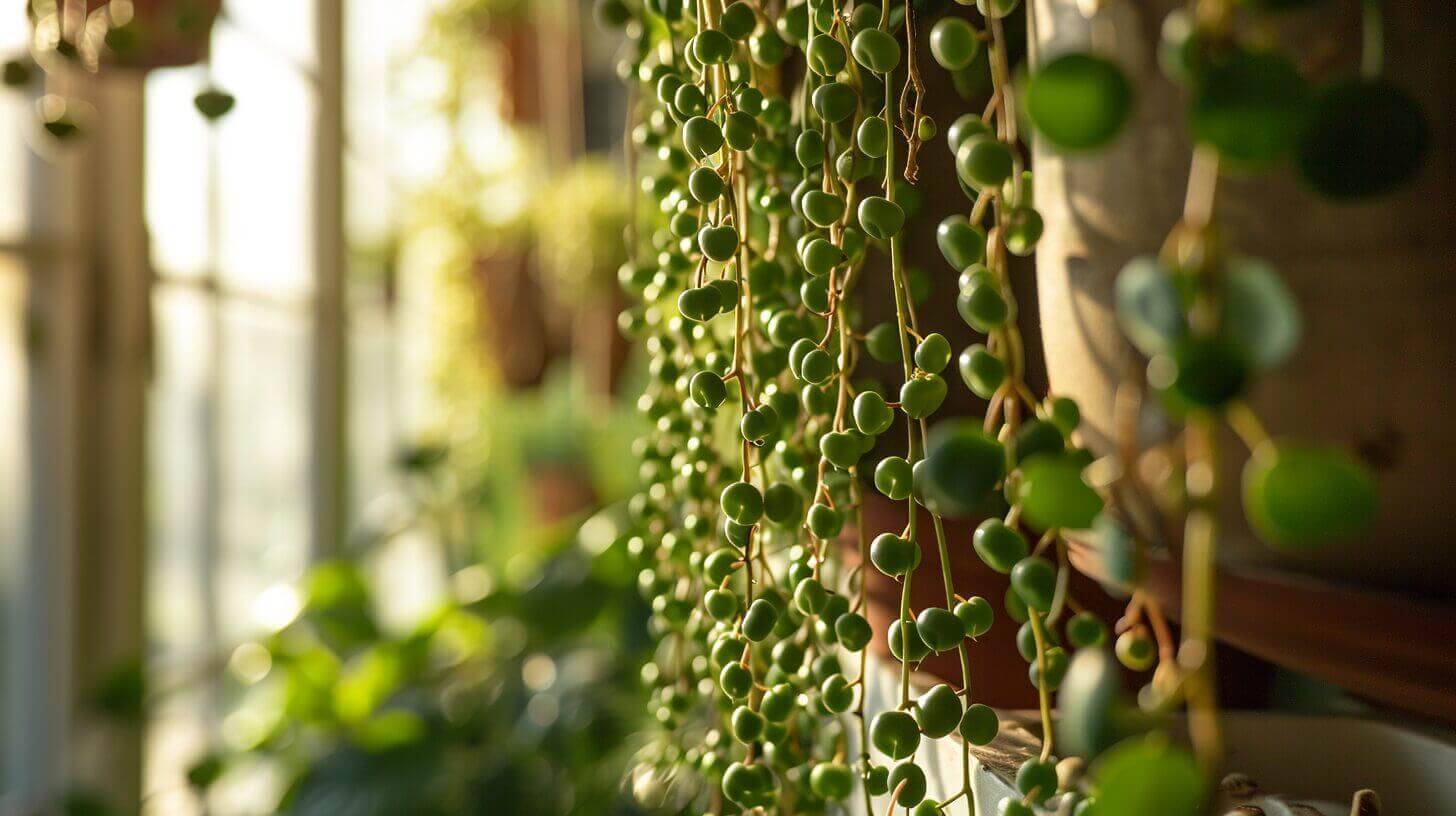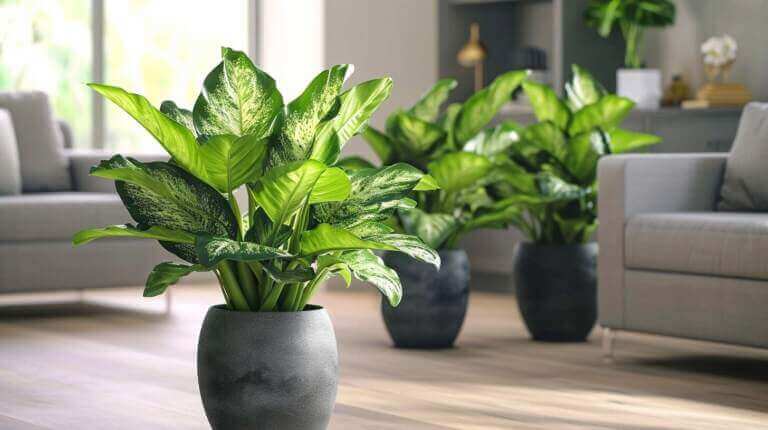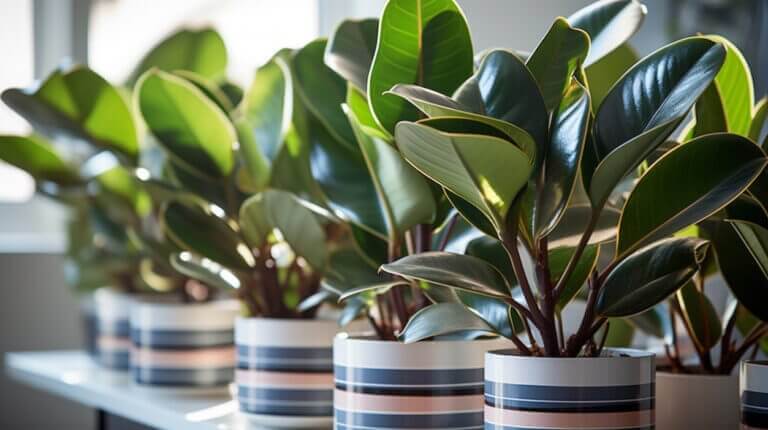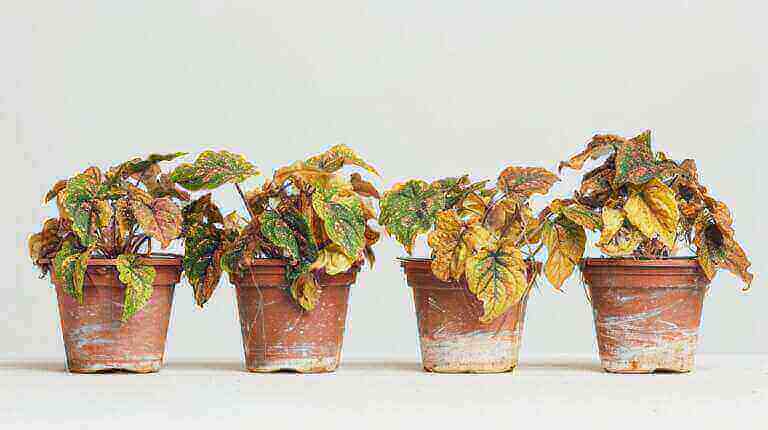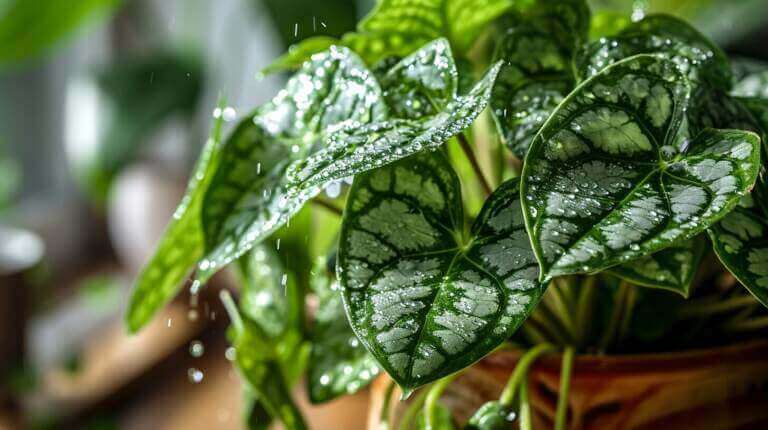Identifying Common Problems Why Your String Of Pearls Plant Dying
If you’re reading this, chances are your string of pearls is dying, or that’s seen better days. Don’t worry, I’m here to help you figure out what’s going wrong and how to revive your precious plant. Let’s dive into the common problems that can cause your string of pearls plant to wither and find the solutions to bring it back to life.
Key Takeaways:
- Overwatering and underwatering are common watering issues that can lead to a dying string of pearls plant.
- Using the right potting mix and pot size is crucial for the plant’s health.
- String of pearls plants require bright but filtered light, avoiding intense sunlight.
- Aphids and mealybugs can attack your plant, so it’s important to address pest infestations.
- Trimming dead parts, propagating cuttings, and maintaining ideal humidity levels are key to saving a dying string of pearls plant.
String Of Pearls Dying – Overwatering and underwatering
One of the most common problems that can cause a string of pearls plant to die is watering issues, specifically overwatering and underwatering. Both these problems can have detrimental effects on the health and vitality of the plant.
Overwatering can lead to the roots of the plant becoming waterlogged, which can cause them to rot and eventually die. This can result in the leaves of the string of pearls plant starting to shrivel and become mushy. If left untreated, overwatering can quickly lead to the death of the plant.
On the other hand, underwatering can cause the plant to become dehydrated and result in shriveled and dried up leaves. String of pearls plants requires enough water, but it is important not to overdo it. If you water your string of pearls too often or provide too much water at one time can be just as harmful as overwatering.
To ensure the health of your string of pearls plant, it is crucial to find the right balance of watering. The soil should be allowed to dry out between waterings, but it should not be left completely dry for extended periods. Additionally, proper drainage is essential to prevent water from accumulating in the pot and causing root rot.
Problems For String Of Pearls – Potting Mix and Pot Size
When it comes to the health of your string of pearls plant, the choice of potting mix and pot size are crucial factors to consider. These plants thrive in well-draining soil mixes that mimic their natural habitat. A suitable potting mix for your string of pearls plant should be a combination of commercial cactus and succulent soil mix, which provides excellent drainage, along with perlite for additional airflow and moisture control.
Equally important is selecting the right pot size for your plant. A pot that is too big can lead to water retention, causing the roots to become waterlogged and prone to rot. On the other hand, a pot that is too small may restrict root growth and hinder the plant’s overall health. Choose a pot that allows for proper root development, leaving enough room for the plant to grow without excessive space.
Proper potting mix and pot size can greatly improve the health and longevity of your string of pearls plant. By providing optimal conditions for root growth and moisture control, you can ensure that your plant thrives and continues to beautify your space.
| Potting Mix | Pot Size |
|---|---|
| Commercial cactus and succulent soil mix | Adequate size for root development |
| Contains perlite for added drainage | Not too big or too small |
| Mimics the plant’s natural habitat | Allows for proper root growth |
“Choosing the right potting mix and pot size is crucial for the health of your string of pearls plant. A well-draining soil mix combined with the appropriate pot size will provide the ideal conditions for this delicate succulent to thrive.”
Growing String Of Pearls – Sunlight requirements
Proper sunlight is crucial for the health and vitality of your string of pearls plant. These plants thrive in bright but filtered light, so it’s important to give the plant the right amount of sunlight to prevent damage and promote growth.
Direct sunlight can be harmful to string of pearls plants, causing sunburn and leaf damage. On the other hand, not enough sun can lead to weak and leggy growth. Finding the balance between too much and too little sunlight is key.
For indoor plants, place your string of pearls near a bright window where it can receive indirect light. Avoid placing it in direct sunlight, especially during the hot afternoon hours. If you’re growing your string of pearls outdoors, choose a shaded area that still receives the most light, such as under a tree or awning.
Benefits of indirect light
- Protection from intense sunlight
- Gentle and consistent light for healthy growth
- Prevention of sunburn and leaf damage
- Promotion of strong and compact plant structure
Insect and Pest Infestations
If you notice that your string of pearls plant is being attacked by insects or pests, such as aphids or mealybugs, it is crucial to take immediate action to protect your plant’s health. These tiny invaders can cause significant damage to the leaves and flowers, weakening the plant and making it more susceptible to diseases. Here are some important steps to effectively deal with insect and pest infestations:
- Identify the pest: Carefully examine your plant to determine the type of pest infestation you are dealing with. Look for signs such as tiny crawling insects, sticky residues on leaves, or distorted growth.
- Isolate the plant: To prevent the infestation from spreading to other plants, it is advisable to isolate the affected string of pearls plant.
- Natural remedies: Consider using natural remedies to control the infestation. One effective option is neem oil, a natural insecticide derived from the neem tree. Dilute neem oil according to the instructions and apply it to the affected areas of the plant.
- Regular maintenance: To prevent future infestations, it is crucial to maintain good plant hygiene. Regularly inspect your string of pearls plant for signs of pests and take immediate action if any are detected.
Table: Common Insect and Pest Infestations on String of Pearls Plants
| Pest | Description | Treatment |
|---|---|---|
| Aphids | Small, soft-bodied insects that suck sap from the plant, causing leaves to curl and become distorted. | Prune affected parts and apply neem oil or insecticidal soap. |
| Mealybugs | Tiny, white, cotton-like pests that congregate in clusters, feeding on the plant sap and secreting honeydew. | Remove with a cotton swab dipped in alcohol or apply neem oil to affected areas. |
| Spider Mites | Microscopic pests that feed on plant fluids, causing leaves to become discolored, speckled, or bronzed. | Boost humidity, prune affected parts, and spray with a mixture of water and neem oil. |
Tips for saving a dying string of pearls plant
If you find that your string of pearls plant is on the brink of death, don’t despair! There are steps you can take to save it and bring it back to life. Here are some tips to revive your struggling plant:
Inspect and remove:
Start by carefully examining your plant and identifying any dead or rotting parts. Trim off any blackened roots or moldy sections. Removing these unhealthy parts will help redirect the plant’s energy to the remaining healthy areas.
Propagate and revive:
After trimming the plant, consider propagating the salvaged cuttings. The beautiful thing about string of pearls plants, also known as Senecio rowleyanus, is that they can root from any part of the stem that comes in contact with the soil. By planting the cuttings, you can potentially grow new healthy plants and increase your chances of saving your dying one.
Consider the plant’s needs:
Pay attention to the specific needs of your string of pearls plant. This includes providing it with the right amount of water, light, and humidity levels. Overwatering can cause root rot, so be cautious not to drown your plant. Ensure it receives bright, filtered light and avoid exposing it to intense sunlight, which can lead to sunburn. Additionally, maintain suitable humidity levels to create a favorable environment for growth.
Patience and care:
Reviving a dying plant takes time and patience. Be consistent with your care and give your string of pearls plant the attention it needs. Monitor its progress closely and make adjustments as necessary. With proper care and a little bit of luck, you can save your plant and enjoy watching it thrive once again in all its stringy glory.
FAQ
Why is my string of pearls plant dying?
If your string of pearls plant is dying, it could be due to a number of reasons. It might not be getting enough light, or it could be underwatered or overwatered. Overwatering can lead to root rot, a common problem with this succulent plant.
What is root rot and how does it affect my string of pearls plant?
Root rot is a condition that occurs when a plant is overwatered. The excess water makes it difficult for the roots to breathe, leading to decay. If your string of pearls plant has root rot, you may notice the pearls turning yellow or shriveling.
What are some common problems with string of pearls plants?
Common problems with string of pearls plants include overwatering, underwatering, not enough light, and root rot. These issues can cause the plant to turn yellow, shrivel, or even die.
How can I revive a dying string of pearls plant?
To revive a dying string of pearls plant, first identify the problem. If it’s underwatered, water the plant more frequently. If it’s overwatered, let the soil dry out before watering again. If the plant isn’t getting enough light, move your plant to a brighter location.
What should I do if my string of pearls plant is underwater?
If your string of pearls plant is underwatered, the pearls may start to shrivel. In this case, you should water your plant more frequently. However, be careful not to overwater as this can lead to other problems like root rot.
What should I do if my string of pearls plant is overwatered?
Overwatering is a common issue that can lead to root rot. If your string of pearls plant is overwatered, allow the soil to dry out completely before watering again. You may also need to repot the plant in fresh, well-draining soil.
Why are my string of pearls turning yellow?
If your string of pearls are turning yellow, it could be a sign that your plant is overwatered. Overwatering can lead to root rot, which causes the pearls to turn yellow and eventually decay. Reduce watering and ensure your plant is in well-draining soil.
What are some tips for growing a string of pearls plant?
When growing a string of pearls plant, ensure it gets enough light but not direct sunlight. Water sparingly and only when the soil is dry. This plant prefers well-draining soil. Regularly check for signs of underwatering or overwatering. With the right care, your string of pearls plant can thrive.

